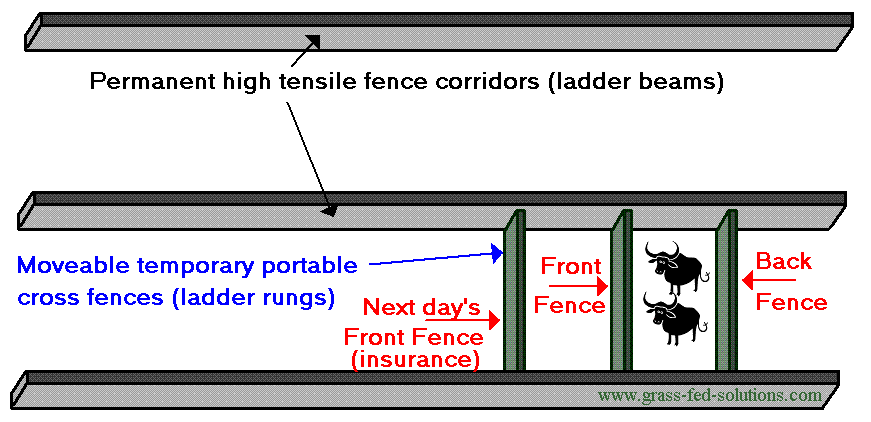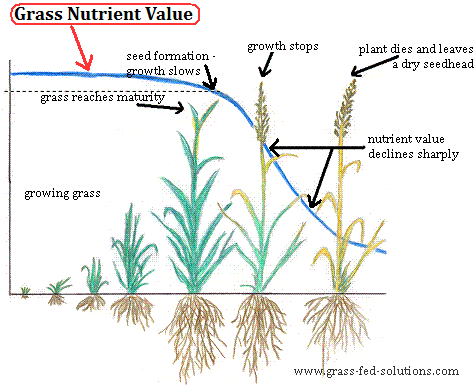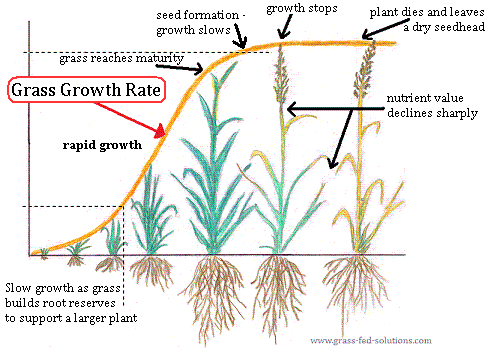Hi Andie,
what is, in your opinion, the single best piece of advice for people considering raising beef cattle?
Great question - basically, where to start to turn all this information into something tangible and get some hooves out onto pasture.
 #1
#1, before doing anything else, spend some time soul-searching to very very clearly
identify the goals you have for raising beef cattle. - there are so many options -
Is it meant as a hobby or as profitable business enterprise? Is it meant to be a full-time career or part-time venture? What part appeals to you - cow/calf, stocker, grass-finishing, purebred breedstock, or some combination? Is it going to be a mixed farm or a farm specializing in cattle only? Figure out what you want to specialize in - this will determine the path you take for your education and planning.
Do not be in hurry to get your first cow - and be even less in a hurry if it is meant to be a business. There is a huge amount of planning and preparation that separates owning a couple of cattle as a hobby and owning a profitable cattle business. Planning and preparation is cheap - cattle and land are not. You can change your mind dozens of times about calving dates, fence location, marketing plan, breed choice, etc, etc, but making changes becomes much more difficult and very expensive once the cattle arrive on site.
#2 Once you've identified your goals for why you want to raise cattle,
start the education process - read, go to conferences, make connections with other farmers in your area that are raising cattle in the way that you also want to raise them. This is the stage where you build up your background knowledge foundation. And this is a good time to expose yourself to a broad range of cattle farming strategies. If it is meant as a full time career, you might even want to take a couple of years to work for someone that does exactly what you want to do ... or go apprentice with a pasture-based cattle farming operation in NewZealand for a few months.
#3 But even during the planning stage, you need to
start putting pen to paper and begin designing YOUR strategy. Listening to others, reading, attending workshops - all that cannot make you a cattle farmer - the real learning begins when you start boiling all the knowledge down onto a plan of your own. Thinking about your plan is not enough - our minds are susceptible to glossing over important details. You actually have to put together a step-by-step plan ON PAPER because that is what will start showing you what questions you still need to ask and what gaps you still need to fill in your knowledge. Here's what an
example cattle farming plan looks like - as a series of farm maps - bearing in mind that this is only part of the overall business plan as the financial calculations that went into this cattle farming plan are not shown. Don't worry too much about where to begin with your plan, just start anywhere. Put pen to paper.
There is a point where you also need to STOP reading new information and stop attending conferences and workshops for a while, and focus everything on just developing your plan. It is very easy to fall into the trap of searching for the holy grail of cattle farming - that the next expert, or the next one after that, will tell you just the right combination of grass species, stocking density, calving date and breed choice so it all just works out and your work is done. But it doesn't work like that. The secret is that there is no holy grail - YOU have to become the expert of YOUR FARMING STRATEGY. And that means letting go of educating for a while so you can put all your time and energy into building the plan for your cattle farming strategy. It is a way of saying to yourself - "okay, I take 100% responsibility for my business, the outcome depends on my knowledge, my skill, and my planning."
By applying yourself to developing your plan, you will discover those areas in your plan that are still hazy (those hundreds of extremely subtle details that make the difference between success and failure) - at which point it is easy to go back and read a book or attend a workshop that specifically addresses those knowledge gaps. But the difference will be that you will have shifted from being a knowledge-absorbing sponge to being very very targeted about what pieces of information you are looking for to put YOUR plan into action, while being able to filter out and ignore the avalanche of other information out there. You'll have shifted to operating from the perspective of being the expert of your plan, seeking out information from other people who are knowledgeable in their own areas of expertise, which may or may not have tidbits of wisdom that you can adapt in order to plug holes in your strategy.
#4 Once you have your plan ready -
build your infrastructure before getting your cattle. Put together your electric fencing, cattle water system, corrals, etc, etc. Then and ONLY then, when your system is built, go out and get the cattle you need to put your plan into action. Rushing out and getting cattle before everything else is ready may be emotionally satisfying, but in reality you are putting a huge obstacle in your path by denying yourself the freedom to really focus all your energy into building your infrastructure first. Believe me, there will be more than enough tweaking and adjustments and fine-tuning needed in your system to keep you fully occupied for a while once your cattle arrive to start using your system ...

Ask any cattle farmer who has shifted a calving season or converted a paddock system into a daily pasture rotation when they already had cattle on the place - making big changes once your system is up and running is HARD. Delaying cattle purchase until your infrastructure is ready gives you a HUGE advantage.
Planning takes the most time. Once you start building, things will happen quite quickly. Setting up a
Smart Electric Fence and Water Grid is not hard. The slowest part is tearing down old barb-wire fencing to make room for your new system.
I hope this give you a good blueprint to get you started; and have a look at the
Frequently Asked Questions section of my website where you can find more tips on getting started in grass fed cattle farming.
And then for existing ranchers?
The three most powerful changes you can make to your cattle farming strategy are:
1. Create a
DAILY pasture rotation. The key word is DAILY, not every two or three or 5 days.
2. If you have a cow/calf herd,
shift your calving season to start AFTER the beginning of the growing season, timed approximately the same time as the deer and moose and other grazing species give birth in your region.
3. Learn how to
start extending your grazing season into the winter months. This is the biggest secret to reducing your production costs - but is only possible
after you implement the other two changes.
Transitioning an existing cattle business to a new or different production system is a lot of work because you'll constantly be stumbling over the old system until you complete the changes. There is bound to be some chaos during the interim. Here is an article to help you
plan changes to your existing cattle farming strategy and there is an entire chapter in my book called
Planning for Change specifically for existing cattle farms that are considering making changes to their beef production strategy.
All the best for your cattle farming journey!



 .
.


 )
)
 Ask any cattle farmer who has shifted a calving season or converted a paddock system into a daily pasture rotation when they already had cattle on the place - making big changes once your system is up and running is HARD. Delaying cattle purchase until your infrastructure is ready gives you a HUGE advantage.
Ask any cattle farmer who has shifted a calving season or converted a paddock system into a daily pasture rotation when they already had cattle on the place - making big changes once your system is up and running is HARD. Delaying cattle purchase until your infrastructure is ready gives you a HUGE advantage.






